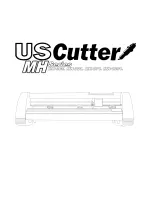
English |
9
Bosch Power Tools
2 609 141 040 | (25.2.13)
Mounting/Replacing the Application Tool/Accessory
If required, remove an already mounted application tool/
accessory.
For this, open the SDS lever
8
to the stop (not further) and
remove the application tool.
Mount the requested application tool/accessory (e.g. plunge
cut saw blade
11
) in such a manner on the tool holder
9
that
the offset faces downward (see illustration on the graphics
page; marking on the application tool/accessory is readable
from above).
Turn the application tool/accessory to a position favourable
for the respective job, and allow it to engage into the cams of
the tool holder
9
. 12 different positions are possible, each
offset by 30°.
Close SDS lever
8
so that it faces against the housing of the
power tool.
Check the tight seating of the application tool/acces-
sory.
Incorrect or not securely fastened application tools/
accessories can come loose during operation and pose a
hazard.
Mounting/Replacing a Sanding Sheet on the
Sanding Plate
The sanding plate
12
is fitted with Velcro backing for quick
and easy fastening of sanding sheets with Velcro adhesion.
Before attaching the sanding sheet
13
, free the Velcro back-
ing of the sanding plate
12
from any debris by tapping against
it in order to enable optimum adhesion.
Position the sanding sheet
13
flush alongside one edge of the
sanding plate
12
, then lay the sanding sheet onto the sanding
plate and press firmly.
To ensure optimum dust extraction, pay attention that the
punched holes in the sanding sheet match with the holes in
the sanding plate.
To remove the sanding sheet
13
, grasp it at one of the tips and
pull it off from the sanding plate
12
.
You can use all sanding sheets, fleece pads/polishing cloth
pads of the Delta 93 mm series of Bosch accessory program.
Sanding accessories, such as fleece pads/polishing cloth
pads, are attached to the sanding plate in the same manner.
Selecting the Sanding Sheet
Depending on the material to be worked and the required rate of material removal, different sanding sheets are available:
Dust/Chip Extraction
Dusts from materials such as lead-containing coatings,
some wood types, minerals and metal can be harmful to
one’s health. Touching or breathing-in the dusts can cause
allergic reactions and/or lead to respiratory infections of
the user or bystanders.
Certain dusts, such as oak or beech dust, are considered
as carcinogenic, especially in connection with wood-treat-
ment additives (chromate, wood preservative). Materials
containing asbestos may only be worked by specialists.
– As far as possible, use a dust extraction system suitable
for the material.
– Provide for good ventilation of the working place.
– It is recommended to wear a P2 filter-class respirator.
Observe the relevant regulations in your country for the
materials to be worked.
Prevent dust accumulation at the workplace.
Dusts can
easily ignite.
Sanding disc Material
Application
Grain size
– All wooden materials
(e.g., hardwood, soft-
wood, chipboard, build-
ing board)
– Metal materials
For coarse-sanding, e.g. of rough, unplaned beams and
boards
coarse
40
60
For face sanding and planing small irregularities
medium
80
100
120
For finish and fine sanding of wood
fine
180
240
320
400
– Paint
– Varnish
– Filling compound
– Filler
For sanding off paint
coarse
40
60
For sanding primer (e.g., for removing brush dashes, drops
of paint and paint run)
medium
80
100
120
For final sanding of primers before coating
fine
180
240
320
400
OBJ_BUCH-1924-001.book Page 9 Monday, February 25, 2013 3:39 PM










































